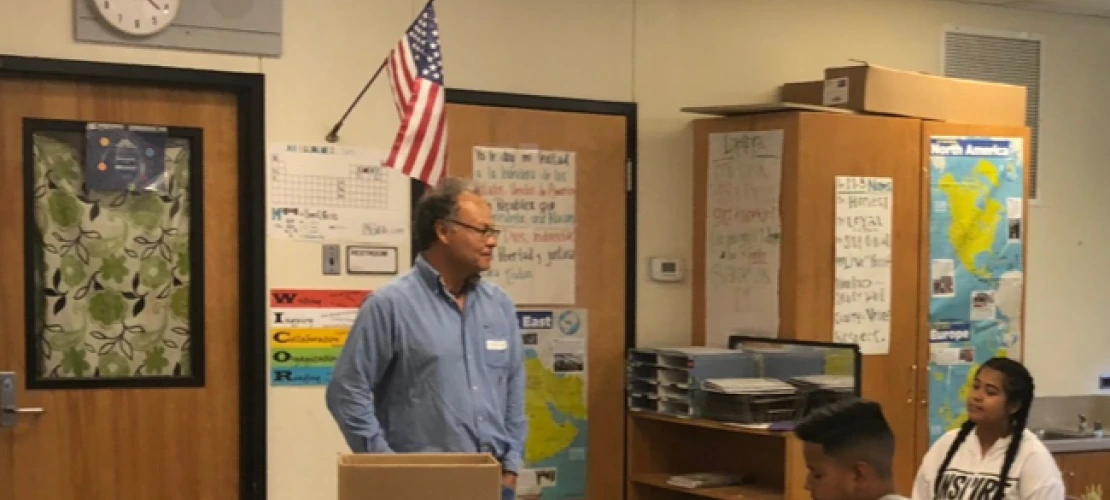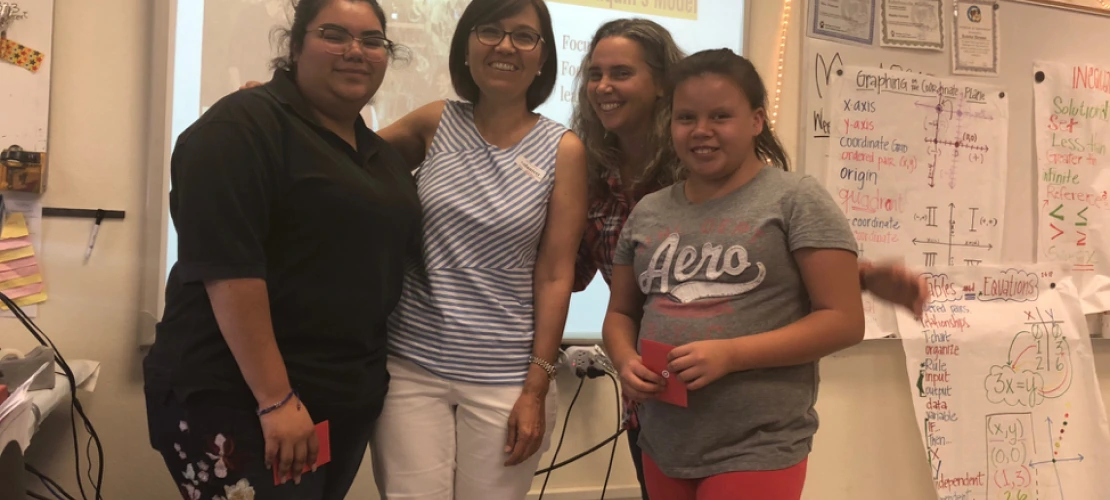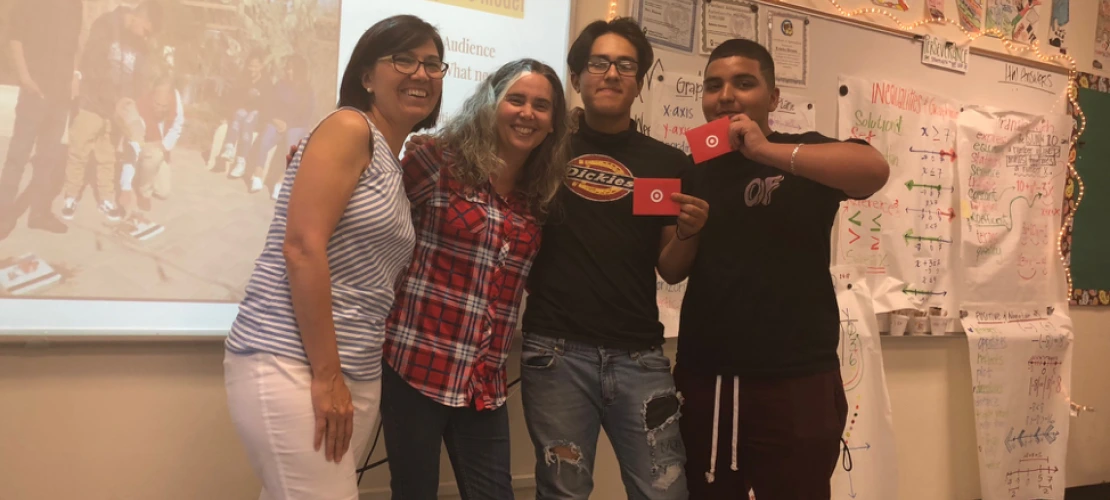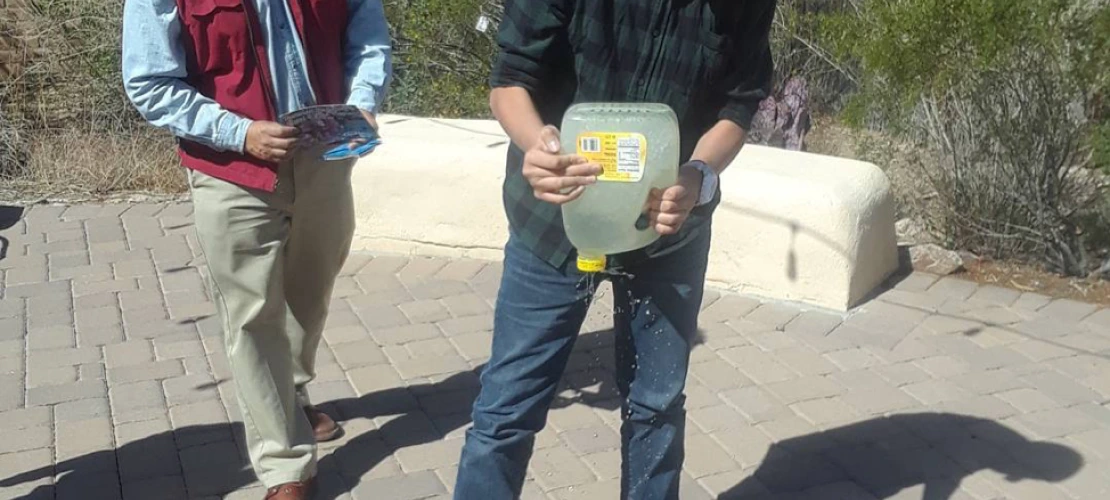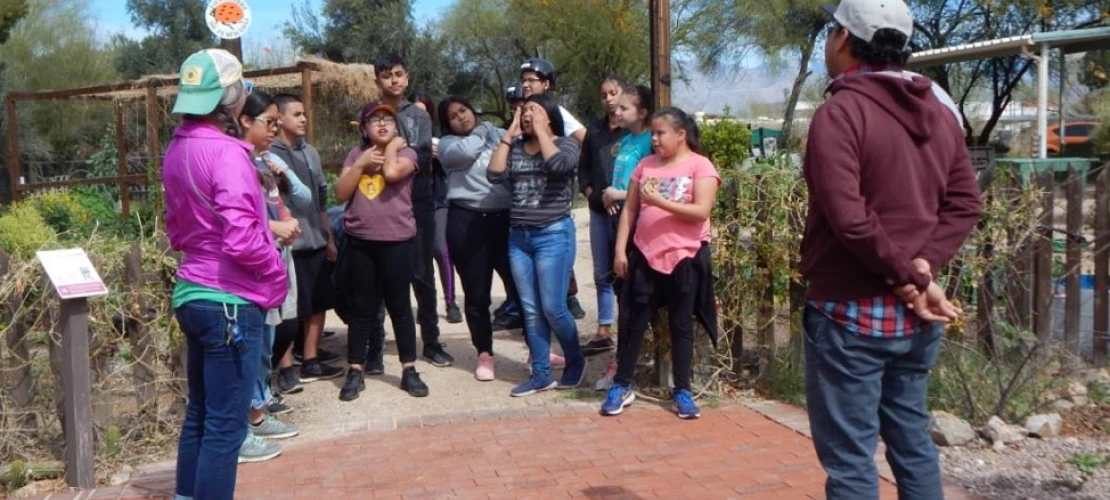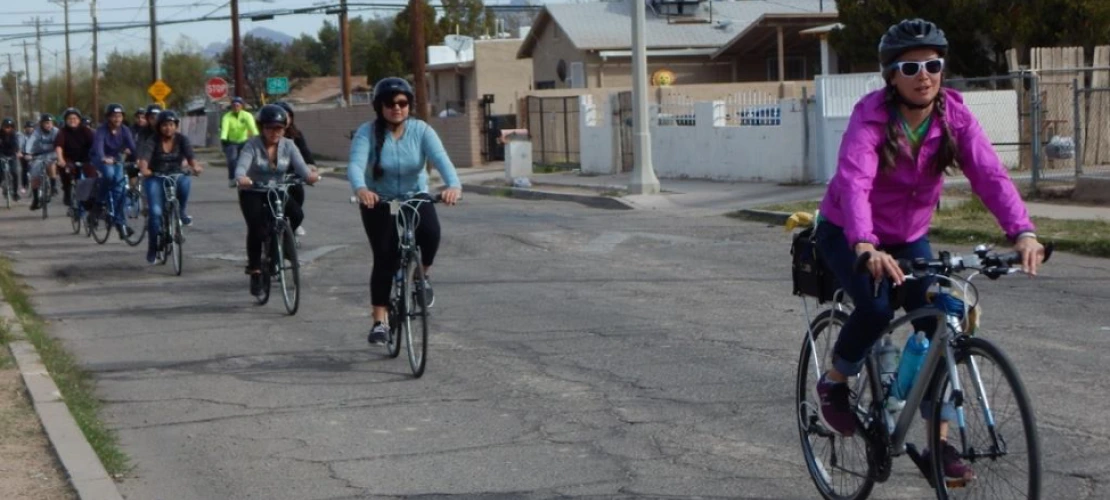By Adriana Zuniga
06/01/18 09:06:am
Engagement with Hollinger Middle School began with an invitation to our partner Joaquin Murrieta of Tucson’s Watershed Management Group, to give a talk to students. The 6th and 7th grade teacher, Rebeka Denson, invited Joaquin to talk with the students about green infrastructure and its benefits to reduce flooding and heat in cities. He visited the school early in the spring 2018 semester and it was a perfect timing to include this concept into the class curriculum. His visit coincided with the start of Rebeka’s curriculum on the Future Cities Project that aims to define how future cities will look like. What started as an invited talk quickly evolved into bike tour and field trips, and then finally into a model competition for urban environments.
Rebeka is also the leader of the school bike club, and when Joaquin learned about this club he invited them to do a bike tour along Liberty Boulevard with stops at several green infrastructure projects – big and small. For example, they stopped at Mr. Davis’ house who lives along Liberty Blvd. to learn first-hand passive and active rainwater harvesting systems at the household scale. They continued their bike tour to the Julian Wash and cycled through both grey infrastructure projects (lined washes) as well as green infrastructure projects. Here they saw the differences between the two approaches to stormwater management. They also visited the Kino Environmental Restoration Project, which is a large-scale project that is linked to the Loop through the Julian Wash. Afterwards, the group biked to the Community Food Bank, where they witnessed rainwater harvesting practices and learned about its benefits in food production.
After the bike tour, Joaquin invited the class to visit the Watershed Management Group facilities. This site is considered a “living laboratory” because scientists experiment new rainwater harvesting techniques combined with greywater reuse, permeable pavement, and other sustainable practices. During this visit, Joaquin showed the students several models that they use to replicate different urban environments – urban, natural, and urban with green infrastructure.
From this experience with the models, Rebeka and Joaquin envisioned a competition for the students. The team that builds the best model of an urban environment would obtain a prize. This competition fit well into the Future Cities Project. Green infrastructure will need to be included in future cities to manage stormwater, produce food, reduce heat, and replenish the aquifers that people depend on for water consumption. For the competition, the class was divided in teams of two people. Teams were assigned to one of four categories – (1) natural, (2) urban, (3) green infrastructure, and (4) rainwater harvesting. For the natural category, students were assigned to replicate a natural environment where there is no impervious surface built. For the urban category, students would replicate a complete impervious situation such as a parking lot, or a street with buildings and roads, but no nature. For the green infrastructure category, students were asked to replicate urban environments with some impervious surfaces as well as some passive rainwater harvesting areas such as raingardens, basins, and swales. Finally, for the rainwater harvesting category, students were required to include active systems where rainwater is collected in cisterns or tanks for later use. Students worked on their models for several days.
At the end of the semester, we provided “Community Leader” gift cards to the winners of each category with funds from the Agnese Nelms Haury Program in Environment and Social Justice. In addition, Watershed Management Group brought more prizes for the second-place winners including water bottles and t-shirts. Selecting winners was very challenging. How do you determine the winners and who should decide who did a better job? Rebeka solved this problem democratically. She invited students and faculty to come in to her classroom and vote by scoring the models. Afterwards, she counted the votes and determined the winners for each category. It was a great end-of-semester celebration for these 6th and 7th graders at Tucson’s Hollinger Middle School!
Future plans include integrating green infrastructure to the curriculum early in the school year. Rebeka will invite Joaquin and I to give talks to their students in the fall and possibly organize a tour to the University of Arizona campus. Touring the university facilities not only will show green infrastructure practices on the university’s campus but also help students visualize themselves as university students in the not-so-distant future. What started as an invited talk on green infrastructure and its benefits to reduce flooding and heat in cities really evolved to become a good exercise in how to integrate green infrastructure into middle school curriculum in creative, engaging and playful ways!


